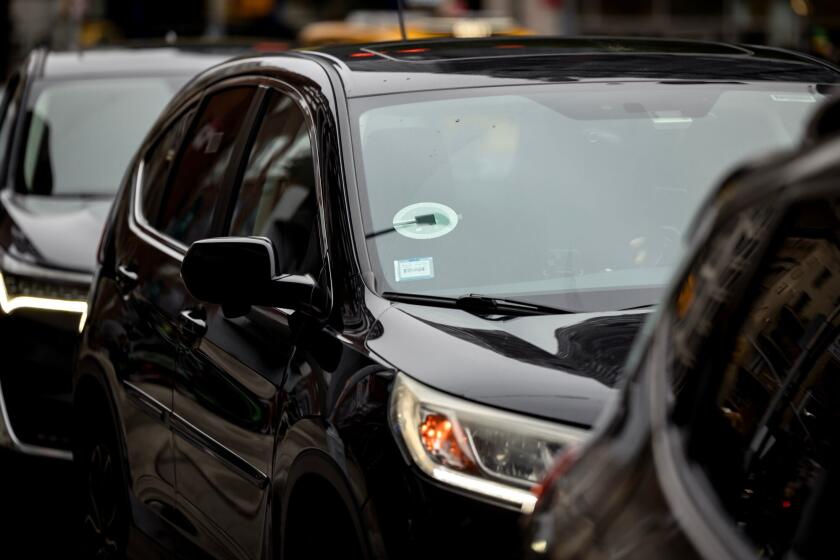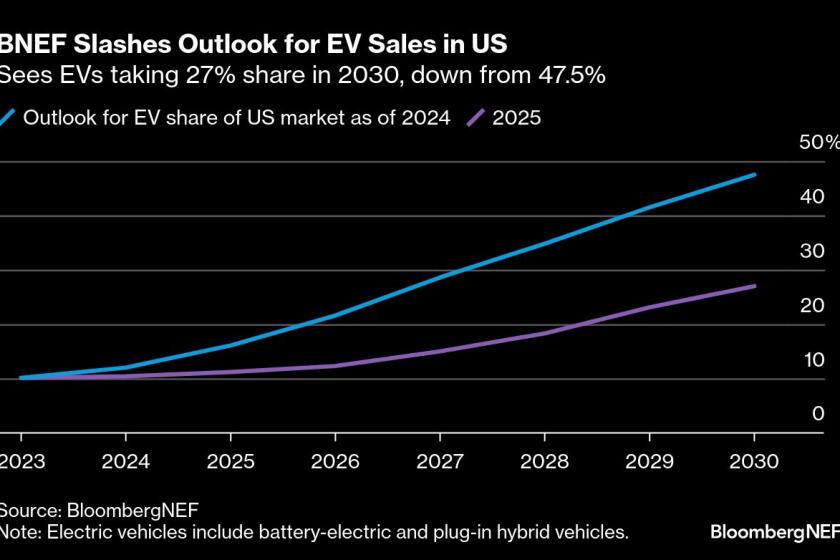In SUV, the ‘S’ Sure Doesn’t Stand for ‘Safety’
- Share via
The SUV craze used to be amusing. When friends would talk about their sport utes, they’d say that word--utes--as if it were the height of sophisticated hilarity. When we got rid of ours, people would start smiling even before we joked that it was because of the way I looked trying to crawl out of it in high heels. Or because the gas bills were more than what the Forbes 500 spent on corporate jet fuel. Or because I found myself reflexively hunching every time I pulled into the parking garage doorway.
I never divulged the real reason, a reason that wasn’t remotely funny: the constant fear that the tank I was driving was going to hurt someone someday, no matter how carefully I drove. Something about it just didn’t feel like a regular car that a regular driver could handle. It handled like a big rig--in the preschool parking lot.
At the time, that secret fear seemed silly. But the more that is known about SUVs, the more widespread has been the call to take their size and power--and handling issues--more seriously. The most recent terrible news peg: The mother and child buried Saturday in Pasadena because a sober 16-year-old, driving the speed limit, lost control of his black 1999 Ford Explorer and accidentally veered up onto the sidewalk, hitting them.
“Devastated,” is how Pasadena Police Sgt. George Wiley, the investigating officer, described all involved in the accident that sent the SUV careening into a throng of screaming pedestrians near the Chandler School last week. Eight people were injured, in addition to the two who died. The teenager--the son of a Pomona Superior Court commissioner--is said to be inconsolable. Though some pointed to the tragedy as an object lesson on teenage drivers, the boy had a new, strict “provisional” license, and was obeying its mandate not to carry teenage passengers.
“We’re not looking at speed or drugs or alcohol,” Wiley says. “While we are looking at other factors, it appears to have been an accident in the pure, Webster’s dictionary sense of the word. It was a ’99 Explorer XLT and a 16-year-old with five months driving experience. It appears to have been the sort of inattention that happens every day to drivers, except that on this day, it had tragic results.”
Tragic, he says, because the sidewalk was crowded that day. But also because the kid whose mind wandered was driving the sort of vehicle that doesn’t get stopped by 9 1/2-inch curbs. The sort of vehicle that, until last year, carried labels warning that it might go out of control if turned too abruptly. The sort of vehicle that makes you wonder: Is it really in the public interest to keep treating these tanks like regular cars?
*
*
None of this, of course, makes the driver less responsible, but you don’t need high beams to see the growing concern about SUVs. Raise your hand if you bought your sport ute just to protect yourself (or your kid) from other sport utes. The average SUV is 800 pounds heavier than the average car on the highway, and high SUV hoods cause more injuries when they broadside autos. In a crash, SUVs are almost three times as likely as cars to kill the other guy.
One recent study found that people who drive SUVs believe consistently that they are driving more slowly than they actually are, possibly because the high center of gravity distorts their perception. Another estimated that, because of design problems, SUVs were causing almost 1,000 unnecessary deaths a year in other vehicles. This year, more than half a dozen auto makers announced that they would be modifying new models to address the lethal tendency of SUVs to ride up in collisions over smaller cars.
Devotees insist that, if there’s a problem, it’s less with the tank than with the driver. But not much gets said about maybe limiting SUVs to people who’ve shown they can handle them. The big catcalls tend to go to the easy stuff that’s least relevant to safety--the SUV as status symbol, the SUV as trendy gas hog.
Officials at the California Highway Patrol and the Department of Motor Vehicles say it’s hard to know what at the state level might improve SUV safety because California doesn’t collate SUV accident data separately. Nor are SUV drivers easily targeted, because no special licenses or tests are required for SUVs, as for motorcycles and commercial trucks--chiefly, it appears, because no one has asked for them.
Maybe it’s time. Accidents happen, but there’s something fate-tempting about this SUV craze. Denial, past a certain point, tends to stop being amusing. Tanks like to be taken seriously.
Shawn Hubler’s column appears Mondays and Thursdays. Her e-mail address is shawn.hubler@latimes.com.






